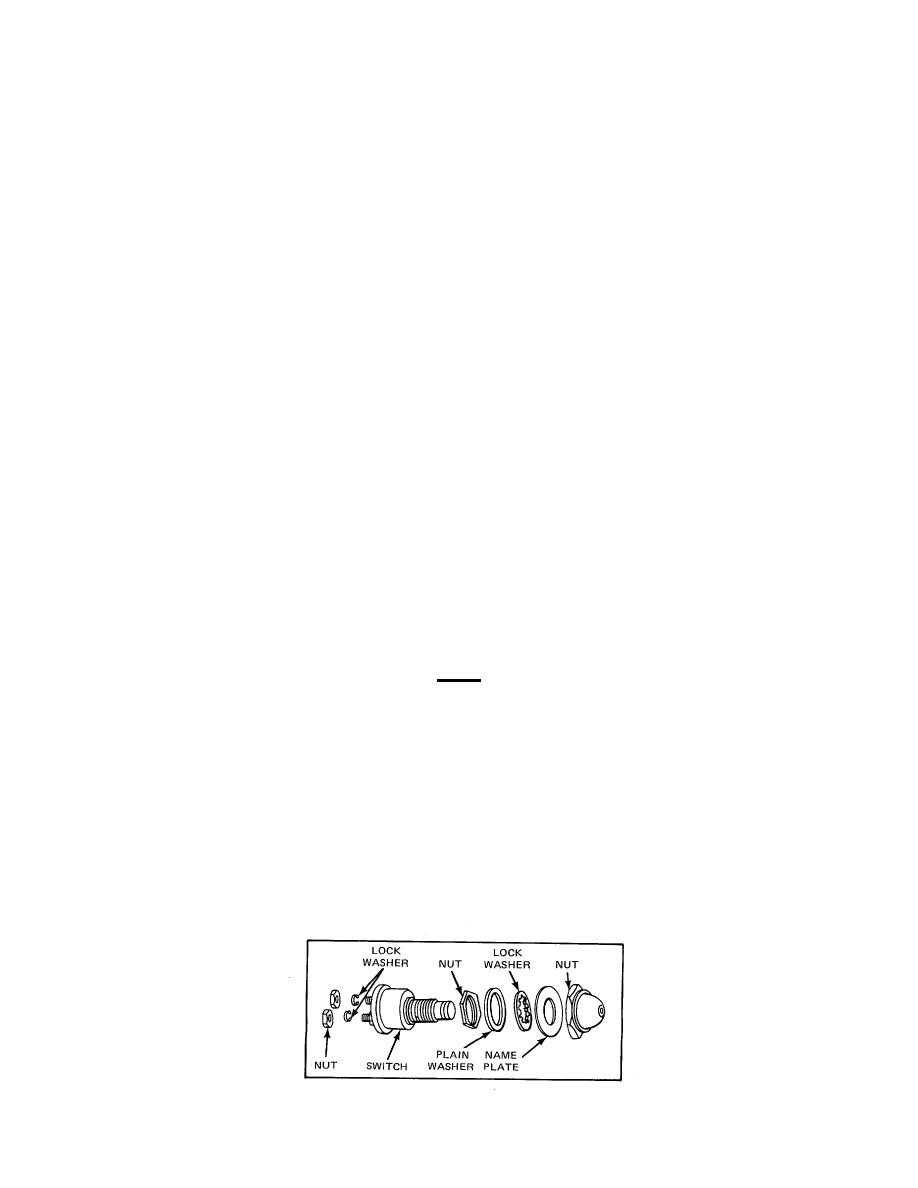
TM 5-3895-346-14
INSTRUMENTS
ENGINE OVERHAUL
full length with suitable clips at intervals of ten inches or less. Sharp bends in the tube must be avoided,
particularly at the gage or bulb connection areas. Where the tube must be bent around any object, the bend
must not be less than one inch radius.
Any extra length can be taken up by coiling, the diameter of which should not be less than two inches. The
coils must be located so that they may be securely fastened to prevent vibrating.
The ammeter is wired into the electrical circuit to show the current flow to and from the battery. After starting
the engine, the ammeter should register a high charge rate at rated engine speed. This is the rate of charge
received by the battery to replenish the current used to start the engine. As the engine continues to operate,
the ammeter should show a decline in the charge rate to the battery. The ammeter will not show zero charge
rate since the regulator voltage is set higher than the battery voltage. The small current registered prevents
rapid brush wear in the battery-charging alternator. If lights or other electrical equipment are connected into the
circuit, then the ammeter will show discharge when these items are operating and the engine speed is reduced.
The tachometer, driven by the engine, registers the speed of the engine in revolutions per minute (rpm).
Throttle Control
The engine throttle is connected to the governor speed control shaft through linkage. Movement of the speed
control shaft changes the speed setting of the governor and thus the engine speed.
Engine Starting Switch
To start the engine, a switch (Fig. 2) is used to energize the starting motor. Starting switches may vary in
design and their contacts must be rated sufficiently to carry the starter solenoid current.
NOTE
Tighten the starting-switch mounting nut to 36-48 lb in. (4-5.5 Nm).
Engine Stop Knob
A stop knob is used to stop the engine. When stopping an engine, the engine speed should be reduced to idle
and the engine allowed to operate at idle for a few minutes to permit the coolant to reduce the temperature of
the engine's moving parts. Then pull the stop knob and hold it until the engine stops. Pulling on the stop knob
manually places the injector racks in the no-fuel position. Return the stop knob to its original position after the
engine stops.
Emergency Stop Knob
In an emergency, or if the engine continues to operate after pulling the stop knob, the emergency stop knob
may be used to stop the engine. When the emergency stop knob is pulled, the air
Figure 2. Typical Engine Starting Switch
381

